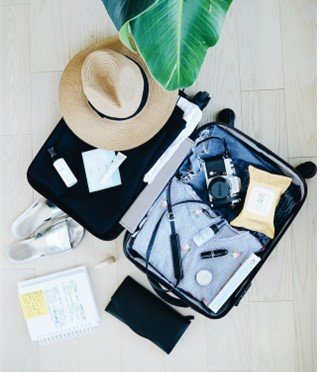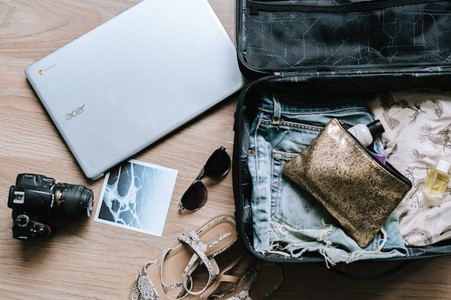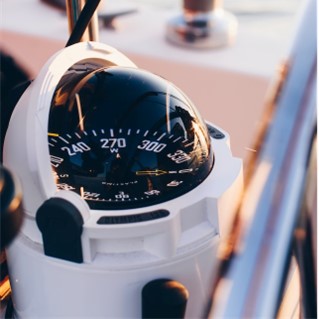When going on vacation, baggage fees can be costly, sometimes even reaching the cost of the flight itself! Carl Deane explains in the following article how travelers can maximize their suitcase space to reduce unnecessary fees.
One of the first things to do is make sure that only the necessities for the trip are packed; don’t be tempted to bring more than what is needed “just in case”! Once the packing list has been narrowed down, maximize space by rolling or compressing clothing, then choosing a bag that makes the most of the baggage allowance for that airline.
Choose the Right Bag
Most airlines allow for a carry-on bag free of charge, and then they will bill travelers for any checked-in luggage that needs to go into the hold. This means that savvy travelers must make the most of the carry-on baggage allowance such that if they do it right, they may not even need to check a bag at all!
One of the first things to do while booking a vacation is to check the airline’s baggage allowance. This way makes it easy to know early on what can and cannot be taken!
Using the max baggage dimensions, find a bag that exactly fits the criteria down to the tenth of an inch. By typing the airline into an online marketplace, for example, “American Airlines Cabin Bag”, a whole host of bags tailor-made to these dimensions will usually show up.
Fabric-based bags are also a far better choice than hard-shelled suitcases to use as hand luggage. As they are flexible, they are much more malleable when it comes to the dreaded task of fitting one’s bag into the bag sizers at the airport.
Roll it Up
When packing clothing, think tactically when placing it into the suitcase. Instead of folding the clothes in and stacking them on top of each other, consider rolling them up tightly. This not only compresses the clothing, pushing out any excess air to maximize baggage space, but it also reduces wrinkles and creases!
Smaller items like socks or underwear can also be rolled up in other clothing, such as into a top or a pant leg.
For those with doubts about whether this method works: ask a flight attendant. Almost all of them prefer rolling their clothes instead of folding them for traveling!
Vacuum Pack
Another way to make use of every bit of luggage space is to vacuum pack clothing and other soft items in bags. This compresses them even more and removes almost all air, massively shrinking down the space that they take up.
Although this method is quite effective, travelers should hope there is an iron in their hotel room, as their clothing is likely to have wrinkles and creases afterward.

Toiletries Travel Hack
Toiletries can be a hassle when going on vacation, especially when it comes to making sure they follow the volume requirements and are ready for security.
Those traveling from larger airports can get around this by simply not bringing any toiletries at all (or at least only their preferred ones). Many of these essentials can be bought from stores in the departure lounge, and savvy travelers can even order their toiletries online before they travel, using click and collect to ensure it is all there ready for them to pick up!
Bring Only the Essentials
Even for those who plan to only pack light, taking more than what is needed for a vacation is far too common, as people tend to get carried away.
Plan ahead by counting out how many days there are on vacation, as well as checking the weather forecast before packing to know what temperature and conditions to expect rather than accounting for every imaginable outcome. Be conscious of the fact that items such as jeans and outerwear could be worn for multiple days, so an entire outfit is not needed for each day of the trip!
Speaking of outerwear, large and bulky coats and jackets are best worn onto the flight, as they won’t count towards the baggage allowance.







